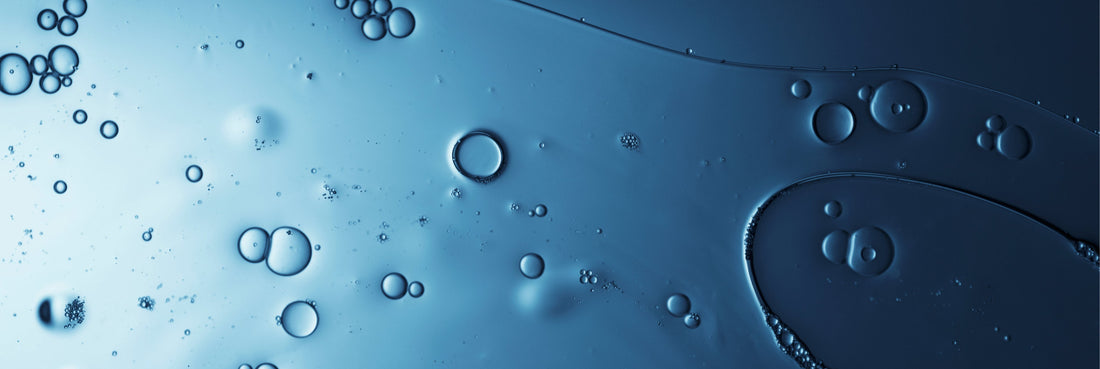
Pairing Smart: How to Combine Skincare Ingredients for Optimal Results
Share
A well-curated skincare ritual isn’t just about choosing high-quality products, it’s about combining the right ingredients in a way that maximizes benefits while minimizing irritation. With the rise of advanced actives like peptides, retinoids, and vitamin C, understanding how to pair them has become essential for achieving optimal skin health. This guide will help you navigate the world of ingredient combinations, offering clear strategies to help you get the most out of your skincare ritual.
The Importance of Smart Pairing
Not all skincare ingredients play well together. Some combinations amplify each other’s effects, while others can cause redness, dryness, or diminished results. Smart pairing ensures you’re supporting your skin with complementary actions – boosting hydration, collagen production, and barrier health – without overstimulating or sensitizing your skin. A thoughtful approach ensures you get maximum benefit from your products without overwhelming the skin or compromising its barrier.

Common Active Ingredients in Skincare
Before diving into pairings, it’s helpful to understand some of the most common active ingredients you’ll encounter:
Peptides: Promote collagen production, improve elasticity, and repair the skin barrier.
Retinoids (retinol, tretinoin): Stimulate cell turnover, improve texture, and reduce wrinkles.
Vitamin C: Brightens skin, evens tone, and provides antioxidant protection.
Niacinamide: Calms redness, strengthens the skin barrier, and regulates oil.
AHAs/BHAs (glycolic acid, salicylic acid): Exfoliate, refine pores, and smooth skin.
Hyaluronic Acid: Provides deep hydration and plumps the skin.
Resveratrol: Delivers antioxidant protection, reduces inflammation, and helps prevent premature aging.

Best Combinations: What Works Well Together
Certain ingredient combinations work synergistically, amplifying each other’s benefits:
-
Peptides + Hydrators (Hyaluronic Acid, Glycerin)
Peptides work best in a well-hydrated environment. When paired with hydrators like hyaluronic acid or glycerin, they can penetrate more effectively, support collagen production, and improve skin elasticity and smoothness. This combination helps maintain a plump, resilient complexion. -
Peptides + Resveratrol
Together, they promote skin repair and firmness. Resveratrol fights free radical damage, while peptides boost collagen and improve skin elasticity, making it a fantastic anti-aging combo. -
Niacinamide + Vitamin C
Research shows they can be used together to brighten skin and reduce inflammation. -
Hyaluronic Acid + Niacinamide
Niacinamide helps regulate oil production, refine pores, and calm inflammation, while hyaluronic acid provides deep hydration. Combined, they create a balanced approach that soothes, hydrates, and improves skin texture without causing irritation. -
Retinoids + Moisturizers
Moisturizers buffer retinoids, reducing irritation without diminishing effectiveness. -
Ceramides + Peptides
Both support the skin barrier and improve resilience, making them ideal partners. -
Vitamin C + Sunscreen
Vitamin C offers antioxidant protection, neutralizing free radicals and brightening skin tone. When used under sunscreen, it boosts defense against UV damage and environmental pollutants, making your sun protection even more effective.

Pairings to Avoid: What Not to Mix
Certain combinations can irritate the skin or cancel each other out:
-
Peptides + Strong Acids or Retinoids
While peptides are gentle and reparative, strong low-pH acids like vitamin C, AHAs, or BHAs can break them down or interfere with their activity, same as retinoids. Using these together may reduce the effectiveness of peptides and increase skin sensitivity. -
Peptides + Pure Vitamin C (L-Ascorbic Acid)
While some stabilized forms of vitamin C (like magnesium ascorbyl phosphate) can be peptide-friendly, pure L-ascorbic acid is highly acidic and may destabilize certain peptides, particularly copper peptides like GHK-Cu. This can reduce their effectiveness and even irritate sensitive skin. -
GHK-Cu + Niacinamide
Niacinamide might chelate (bind) with copper ions, potentially reducing the effectiveness of GHK-Cu. If you’re layering separate products (for example, a niacinamide serum and a GHK-Cu serum), you can apply them at different times (one in the morning, one in the evening) -
Vitamin C + Retinoids
Both ingredients are powerful on their own, but combining them can be too harsh, especially for sensitive skin. They work best when used at different times – for example, vitamin C in the morning for antioxidant defense, and retinoids at night for skin renewal. -
AHAs/BHAs + Retinoids
Pairing exfoliating acids with retinoids can compromise the skin barrier, causing redness, dryness, or flaking. It’s best to alternate their use on different nights to minimize irritation and allow your skin time to recover. -
Resveratrol + Strong Acids or Retinoids
Combining resveratrol with these strong exfoliants or actives may increase irritation, especially if you have sensitive skin.

How to Incorporate GLOW into Your Ritual
GLOW is thoughtfully formulated with GHK-Cu, Snap-8, Argireline, Palmitoyl Tripeptide-1, and Palmitoyl Tetrapeptide-7, along with Hyaluronic Acid, making it the best peptide serum for boosting hydration, firmness, and skin recovery. To maximize its benefits:
- Apply GLOW after cleansing and before moisturizing.
- Use it at a different time from stronger actives like retinoids or acids.
- Pair it with barrier-supportive ingredients like ceramides, resveratrol, or squalane to amplify its calming and restorative effects.
Because GLOW is lightweight, non-comedogenic, and suitable for sensitive skin, it integrates seamlessly into most rituals, supporting your skin without irritation.
Final Thoughts: Build a Ritual That Works for You
Smart pairing is about more than avoiding mistakes, it’s about building a skincare ritual that’s tailored to your needs. With thoughtful combinations, you can target multiple skin concerns, improve resilience, and achieve healthier, more radiant skin.